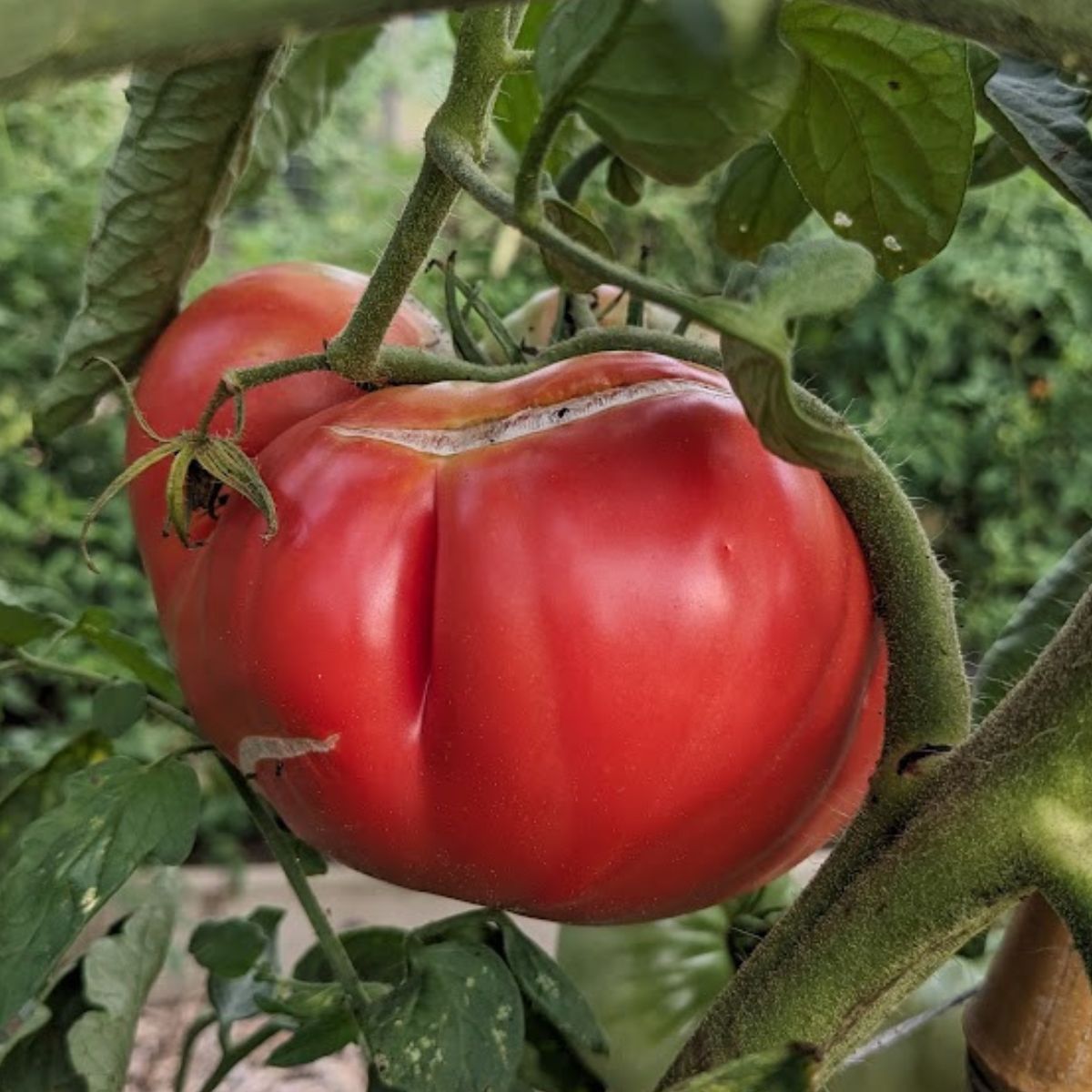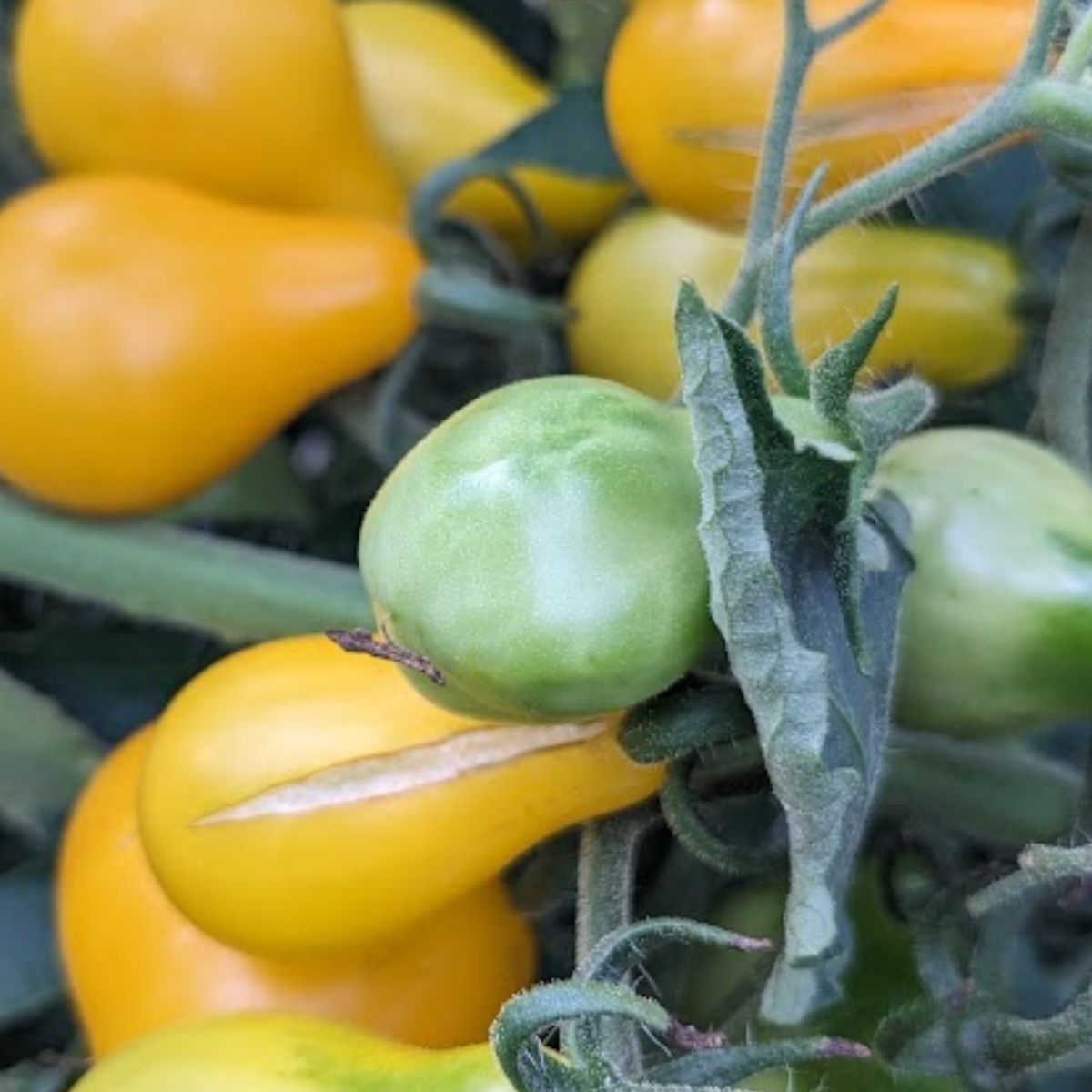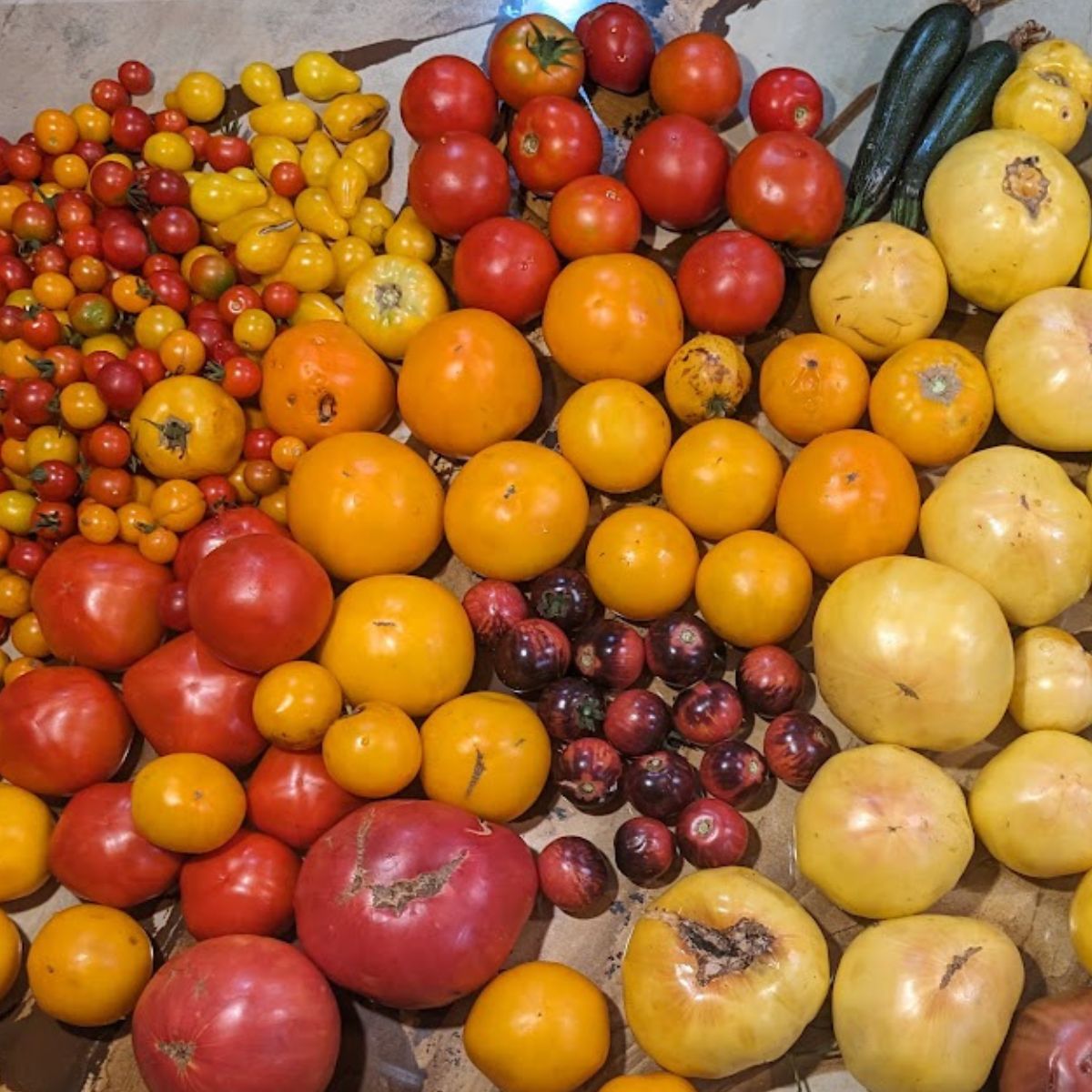When my tomatoes finally began ripening a few weeks ago, I went out to the garden eager to pluck those plump, fleshy fruits from the vine. But as I moved from one plant to the next, my excitement turned to frustration as I wondered, why are my tomatoes splitting? Nearly every tomato had at least one split down the side, from stem to blossom end, exposing its seeds and pulp. Some had even begun to mold.

Many pests and diseases plague tomatoes, such as hornworms and tomato mosaic virus, but this physiological disorder seems to be something else entirely. So what causes it, how can it be prevented, and are the tomatoes still edible?
What Causes Tomatoes to Split?

As I stood among my tomato plants, the first question I wanted answered was: why are my tomatoes splitting on the vine? I had a hunch that it might have to do with the large amount of rain my area received recently, and as it turns out, heavy rain is the leading cause of splitting tomatoes.
When the plants experience a sudden influx of moisture, the flesh of ripe and nearly ripe tomatoes expands faster than the skin can grow to accommodate it, and so the skin bursts open from the building pressure. This is especially true when heavy rain follows a dry period. Splitting doesn’t typically affect green tomatoes, though, which have thicker skins that are still growing.
Some heirloom varieties, such as Cherokee purple, often crack near the top as a normal part of their growing process. These cracks tend to be narrow and heal over, so they don’t often cause any problems.
How to Keep Tomatoes from Splitting
Once I learned the why, I wanted to know how to prevent tomatoes from splitting. Since the splitting is caused by water fluctuations, the most important measure to take is to ensure the plants receive even amounts of water.
Tomatoes need about an inch of water each week, so it is important to water the plants every two to three days when it doesn’t rain. To prevent the spread of soil-borne diseases, be careful to water at the base of the plant, and avoid splashing the leaves.
Mulch can also help maintain even soil moisture. Surround the plants with a thick layer of straw, shredded leaves, or other organic mulch to prevent the soil from quickly drying out. And if your area is prone to heavy rainfall in late summer when tomatoes ripen, plant the tomatoes in raised beds or on ridges to encourage drainage.
Since a tomato is more likely to crack the longer it’s left on the vine, pick your tomatoes after they begin turning red (or yellow, depending on the variety) but before they fully ripen. They will continue to ripen after being picked and taste exactly the same as a fully vine-ripened fruit.
If heavy rain is in the forecast, make sure to go out beforehand and do a thorough harvest.
Finally, tomatoes require nutrients in the proper levels, especially calcium, which helps strengthen the plants’ cell walls. Fertilizing tomatoes can be as simple as adding compost to the beds in the early spring or the fall.
Are Cracked Tomatoes Still Edible?
Now that we know why tomatoes split and how to prevent it, what about those that have already cracked open? Are split tomatoes safe to eat?
It’s important to pick split tomatoes immediately because they are more susceptible to rot and parasites. Toss any that are moldy or smell sour, then allow any unripe tomatoes to ripen on the counter.
Use all split tomatoes as soon as possible to prevent mold and rot. If the cracks have healed over, especially in the case of thin radial cracks on heirloom tomatoes, they will likely not rot quite as quickly.
What Can I Do with Split Tomatoes?
Split tomatoes may not look very pretty, but it’s impossible to distinguish them from unblemished tomatoes once they’re chopped up.
To use a split tomato, simply cut around the crack and use the rest of the tomato as usual. Core, peel, and chop them to make salsa or tomato sauce (paste tomatoes are best for this), or chop them to use in a salad or your favorite entrée.
Here’s a list of 10 ways to use split tomatoes.
So if, like me, you find your tomatoes splitting on the vine, don’t panic! Many of the split tomatoes are still edible, and this annoying problem can be prevented in the future with simple measures like regular watering and frequent harvesting.
How To Use Your Tomato Harvest

As the summer starts to wind down, most tomato plants are in producing large amounts of fruit. Depending on how much you planted, you may struggle to use them all. Here are some ways to use your tomato harvest:
- The Easiest Creamy Tomato Soup From Fresh Tomatoes
- How To Make Tomato Powder & 10 Delicious Ways To Use It
- Fresh Tomato Recipes Your Family Will Love
- What to Do with Green Tomatoes – 19 Delicious Ideas!
- Tomato Sauce Recipes For Year Round Delicious Dinners
- Easy Tomato Canning Recipes To Preserve Your Tomato Harvest




How To Save A Dying Tomato Plant
Wednesday 28th of June 2023
[…] how to prevent tomatoes from splitting […]
How Far Apart To Plant Tomatoes For Better Yield
Tuesday 20th of June 2023
[…] why are my tomatoes splitting? […]
19 Best Cherry Tomatoes To Grow In Your Garden
Tuesday 25th of April 2023
[…] much water at once can cause your tomatoes to split. Learn more about why tomatoes split and how to prevent it. And if it rained too much and you end up with split tomatoes, don’t worry: you can still use […]
What To Do With Split Tomatoes - 10 Tasty Ways To Enjoy Them
Sunday 21st of August 2022
[…] you try to prevent it, your tomatoes might split or get some small cracks in them (learn more about how to prevent split tomatoes). What can you do with […]
Backyard Vegetable Garden Ideas
Monday 8th of February 2021
[…] Why Are My Tomatoes Splitting? Reasons and Solutions for Cracked Tomatoes […]